Choosing the right leash for your horse is crucial for their safety and your control, especially when leading them around or during training sessions. Leashes For Horses are designed to provide a secure connection between you and your equine partner, making it easier to lead them, manage their movements, and even offer gentle corrections.
There’s a lot to consider when it comes to choosing the right leash for your horse, including material, size, and type. In this comprehensive guide, we’ll delve into the world of horse leashes, providing valuable insights and recommendations to help you make the best choice for your needs.
Understanding the Different Types of Horse Leashes
Horse leashes come in various types, each designed to serve specific purposes. Here’s a breakdown of the most common types:
1. Lead Ropes:
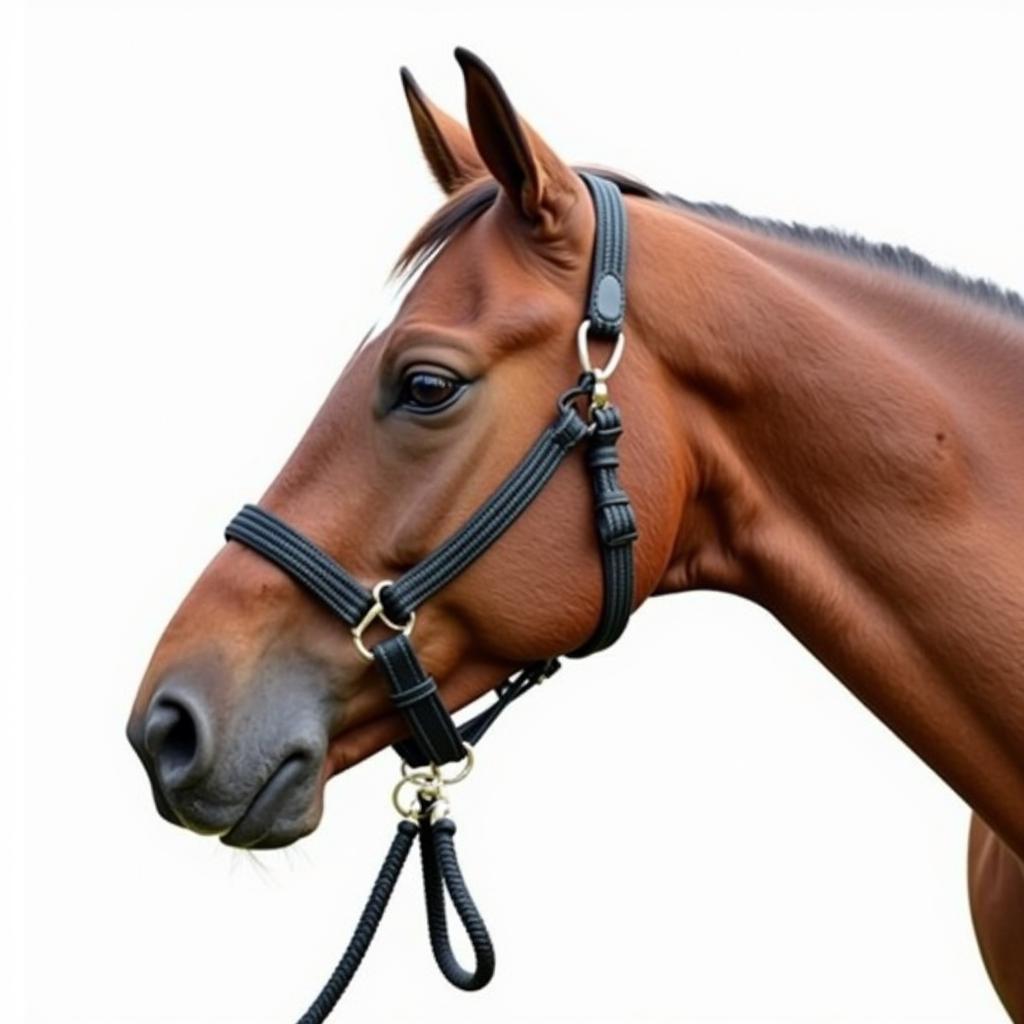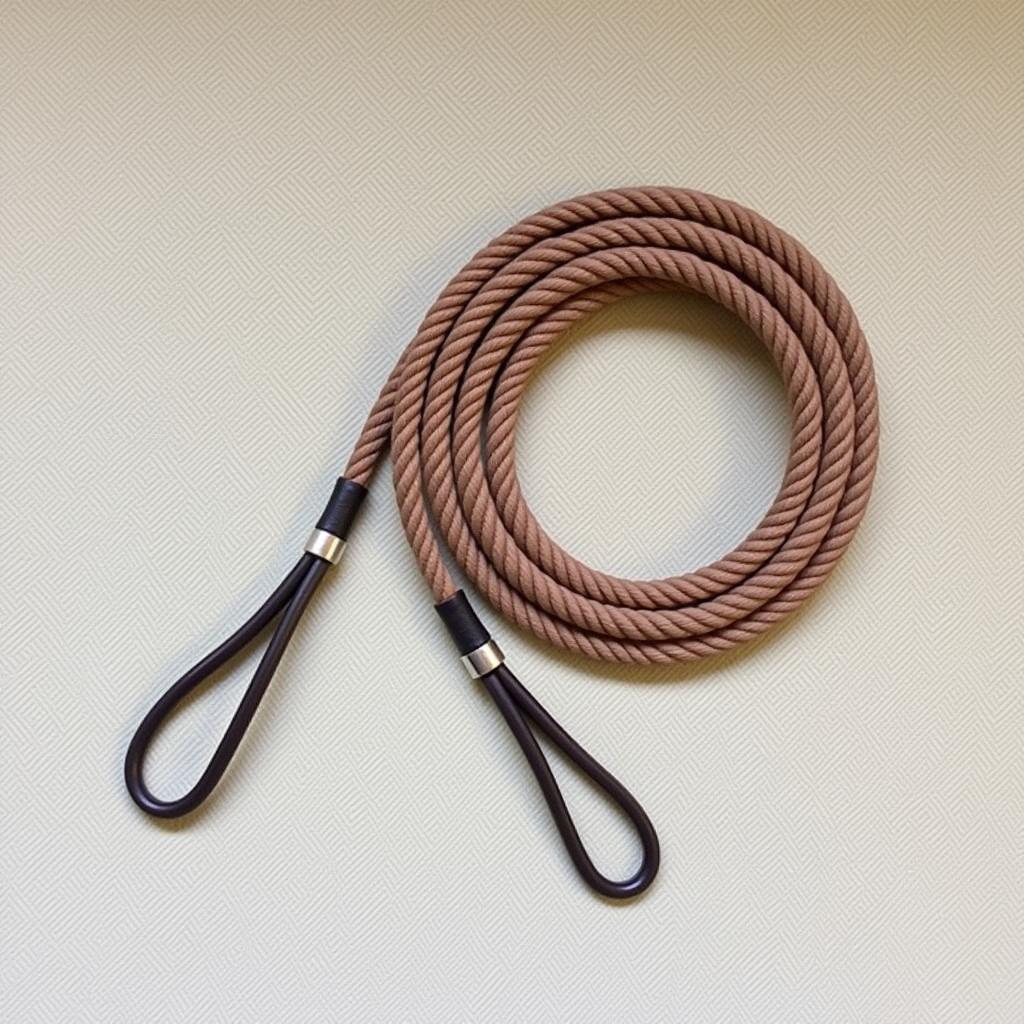
2. Training Leashes:
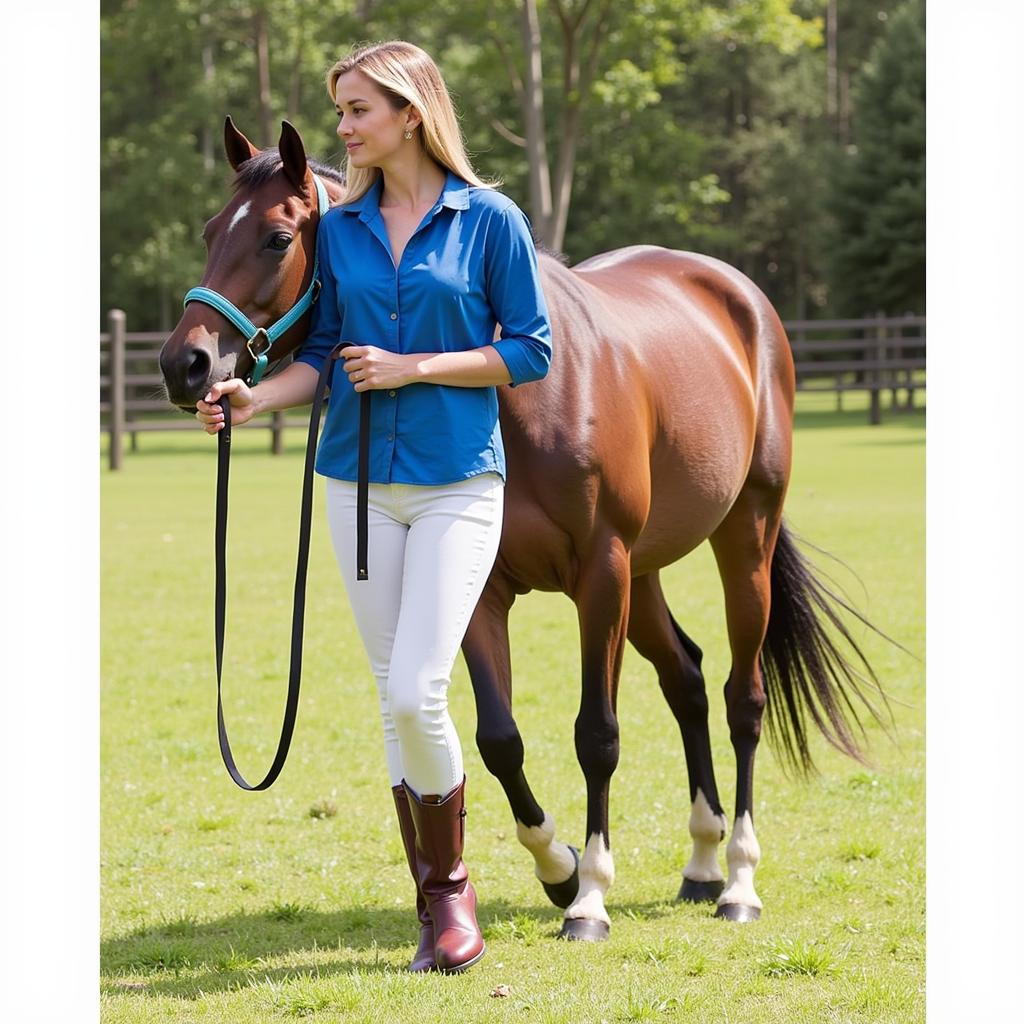
3. Halter Leashes:
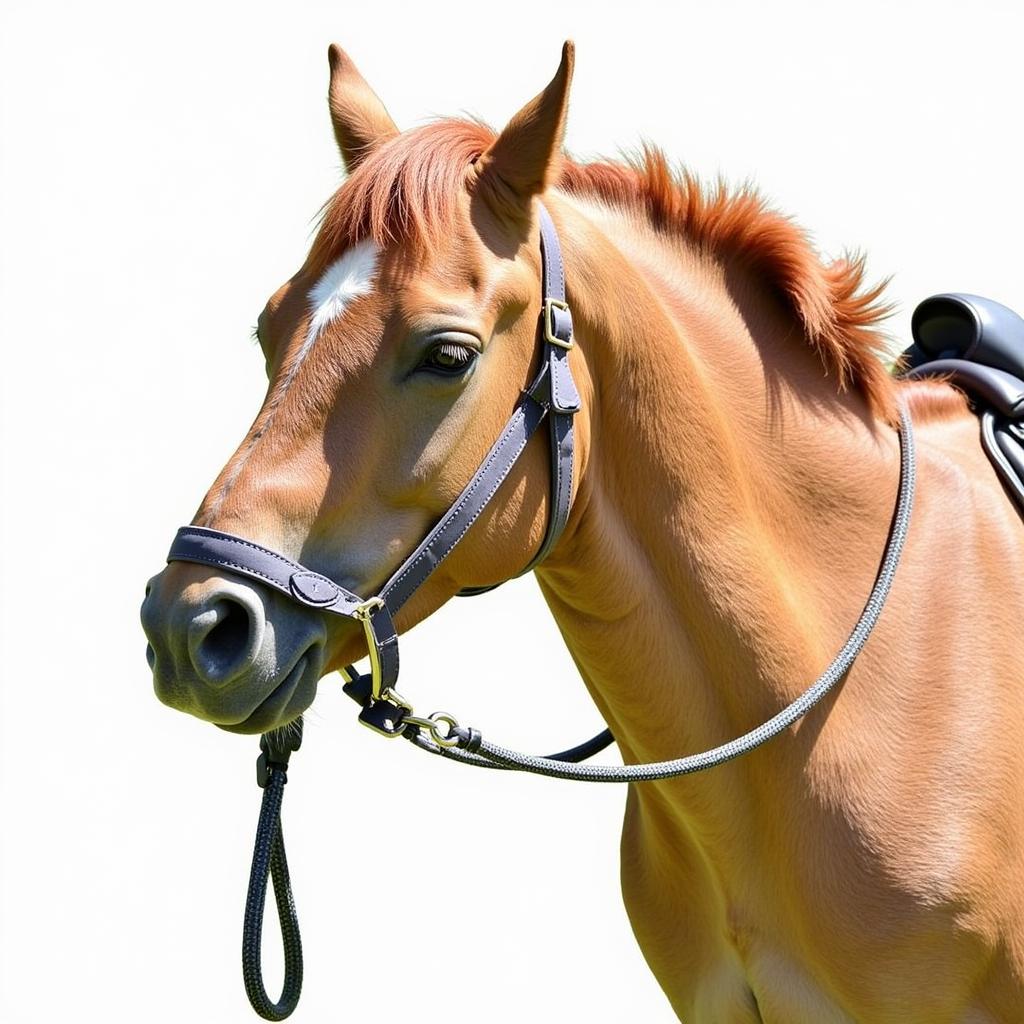
4. Safety Leashes:
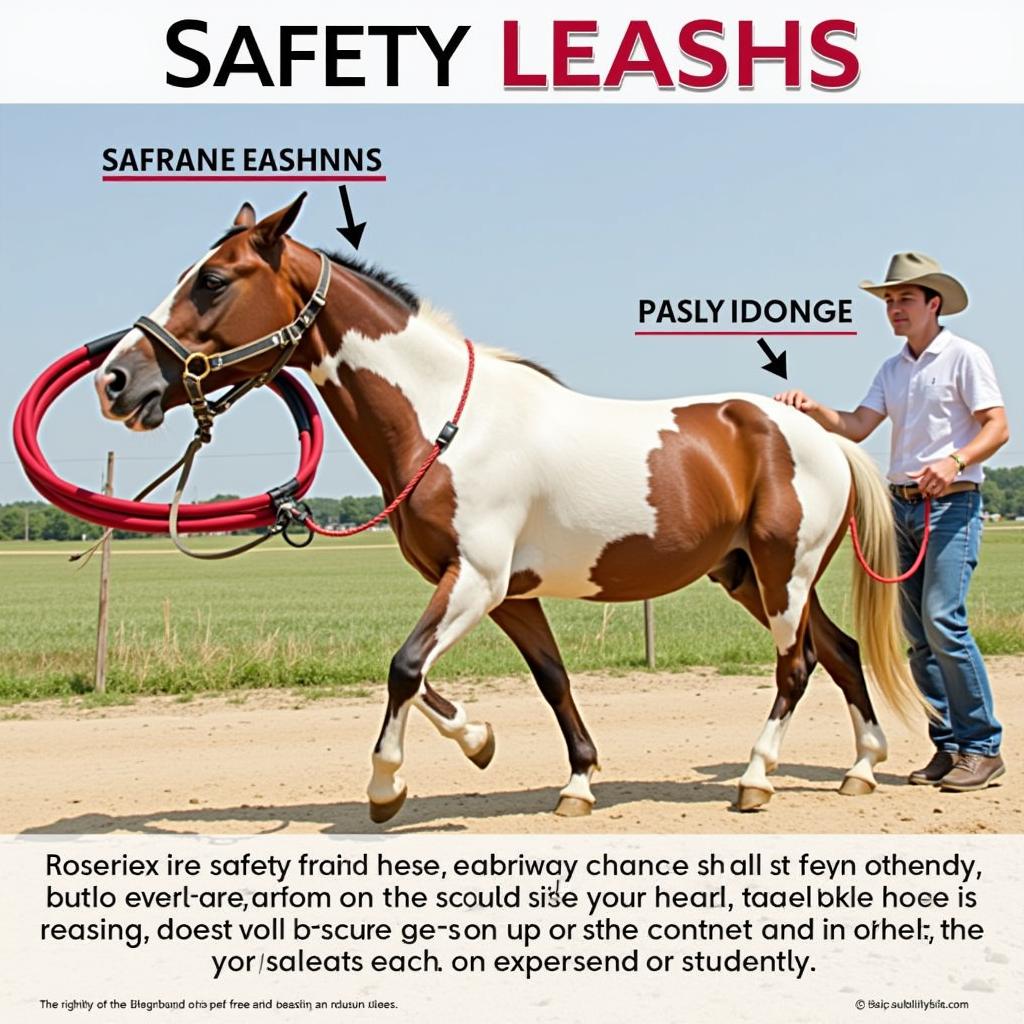
What to Look for When Choosing a Leash for Horses
Choosing the right leash for your horse involves several considerations:
1. Material:
- Leather: Durable, comfortable, and often preferred for its classic look.
- Nylon: Lightweight, strong, and easy to clean.
- Rope: Versatile, affordable, and suitable for various training exercises.
2. Length:
- Lead Ropes: Typically range from 6-12 feet long, providing ample room for leading and maneuvering.
- Training Leashes: Generally shorter, around 4-6 feet, for more control during training sessions.
3. Type of Buckle:
- Snap Buckle: Convenient and secure for quick attachment and release.
- Breakaway Buckle: Offers safety by releasing under pressure to prevent injury.
4. Features:
- Handle: A comfortable handle is important for grip and control.
- D-ring: Allows you to attach a chain or lead rope.
Expert Insight: Choosing the Right Leash for Your Horse
“As an experienced horse trainer, I always recommend choosing a leash that’s both comfortable for the horse and easy for you to manage. Make sure the material is strong and durable, and the length is appropriate for the specific purpose. When in doubt, consider investing in a safety leash – it’s a wise precaution to protect both you and your horse,” advises Mr. James Johnson, an experienced equine trainer.
Frequently Asked Questions About Horse Leashes
Here are some commonly asked questions about horse leashes:
1. What is the best type of leash for a young horse?
- A training leash or a safety leash is recommended for young horses, as they are still learning and may be prone to sudden movements.
2. What is the difference between a lead rope and a training leash?
- A lead rope is generally longer and more versatile, while a training leash is shorter and designed for specific training exercises.
3. How do I know if my horse’s leash is the right size?
- The leash should be long enough to give you adequate control but not so long that it becomes a tripping hazard.
4. How do I clean a horse leash?
- Leather leashes can be cleaned with a damp cloth and leather conditioner. Nylon leashes can be washed with mild soap and water. Rope leashes can be washed with a hose or in a washing machine.
5. How often should I check my horse’s leash for wear and tear?
- It’s a good idea to check your horse’s leash for wear and tear before each use, especially after prolonged use.
6. How do I teach my horse to accept a leash?
- Start by gently introducing the leash to your horse, allowing them to sniff and explore it.
- Reward them with treats and praise when they show interest and positive behavior.
- Gradually increase the length of time they wear the leash, and encourage them to walk calmly alongside you.
Finding the Perfect Leash for Your Equine Partner
Choosing the right leash for your horse is an essential part of responsible horse ownership. It’s a safety measure that allows you to control your horse while providing a comfortable and secure connection. By understanding the different types of leashes, their features, and the essential considerations for choosing the right one, you can ensure a safe and enjoyable experience with your equine companion.
Remember, a well-chosen leash is not just an essential piece of equipment, but also an important symbol of trust and partnership between you and your horse. It represents the bond you share and the commitment you have to their safety and well-being.
Contact Justus Horses USA Today:
For any further questions or help in finding the perfect leash for your horse, feel free to contact us at Justus Horses USA. We’re here to help you make the best decision for your equine companion!
Phone Number: 0772127271
Email: [email protected]
Address: QGM2+WX2, Vị Trung, Vị Thuỷ, Hậu Giang, Việt Nam.